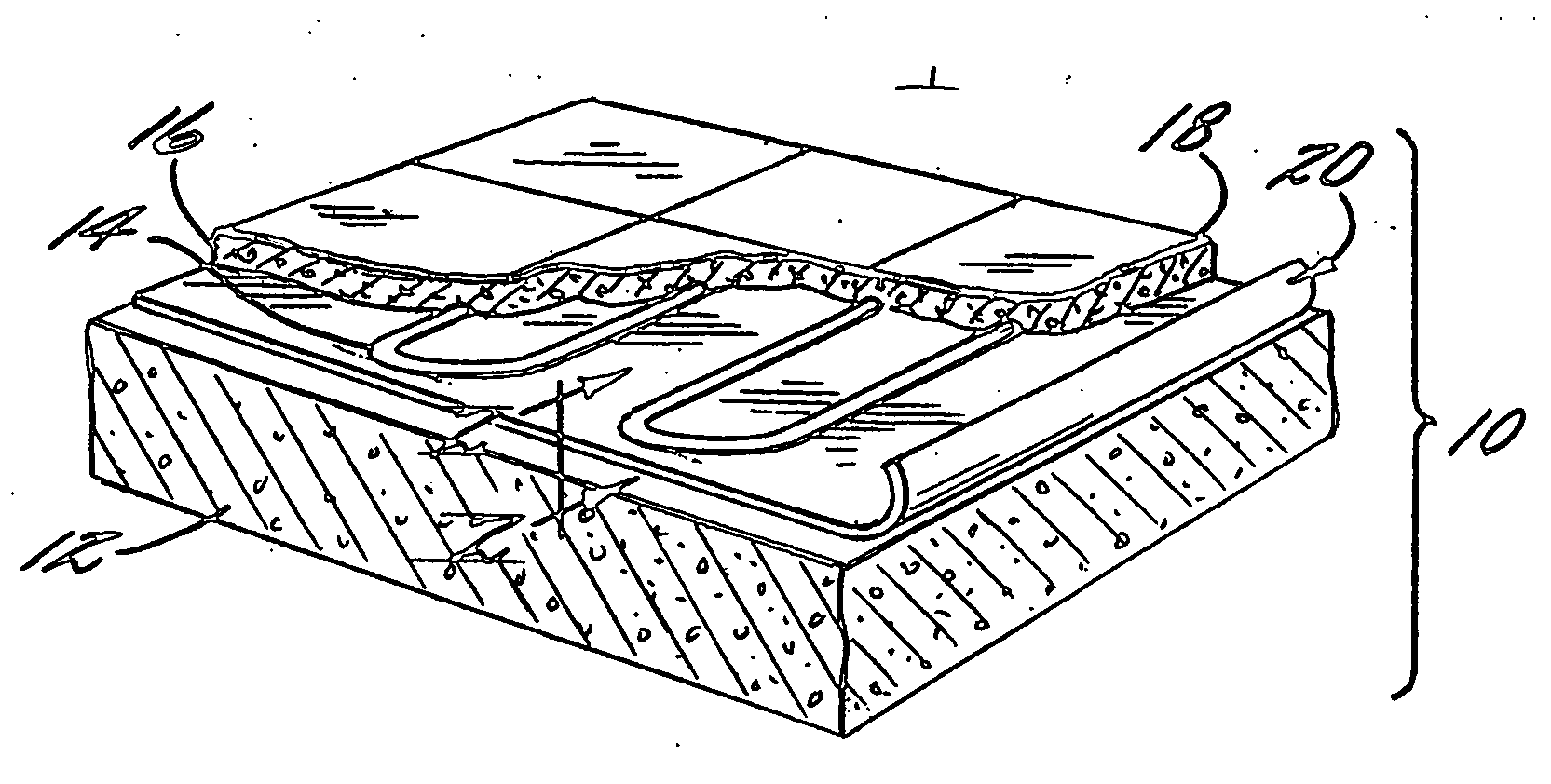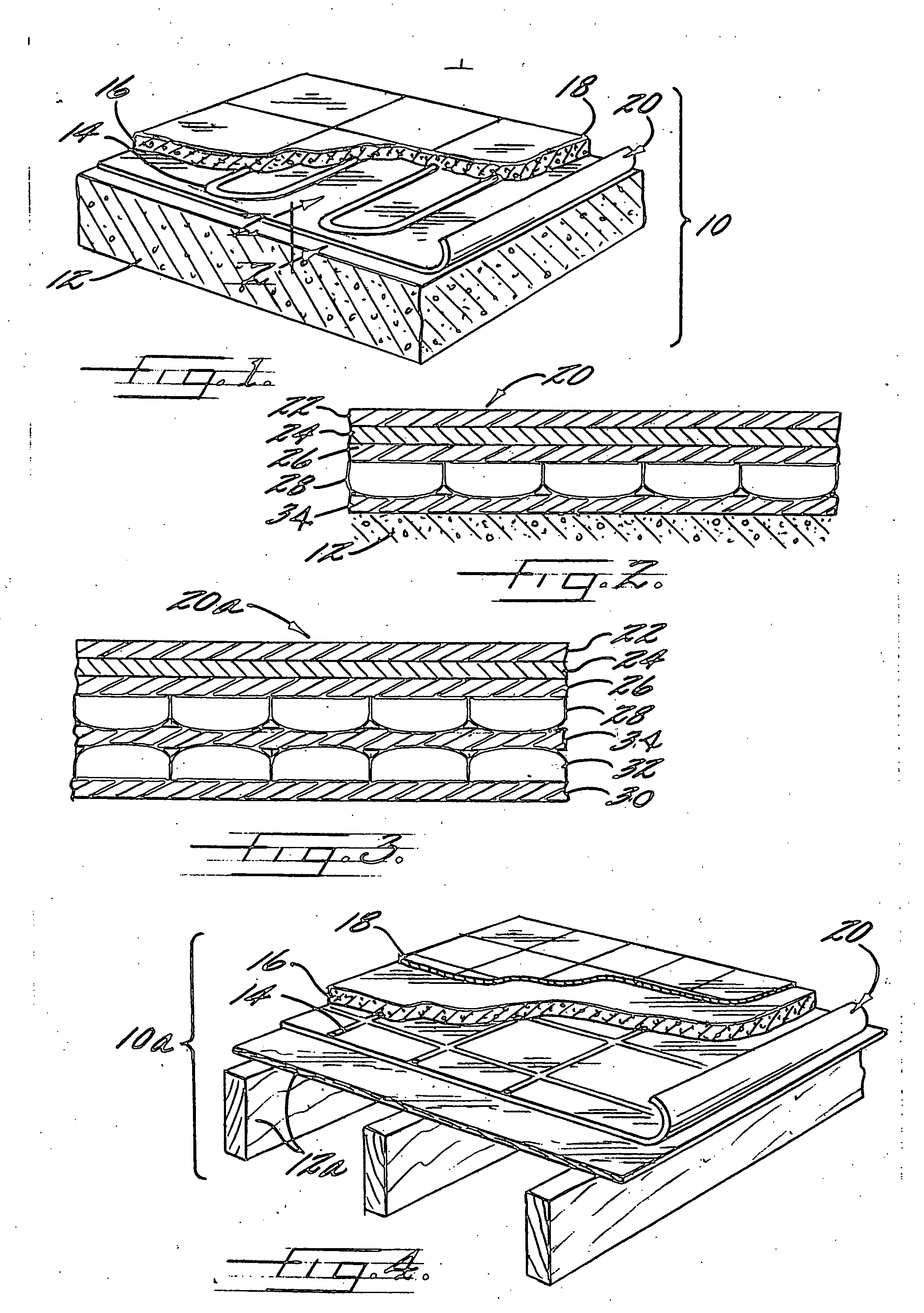Method of installing a radiant density floor heating system
a technology of radiant density and floor heating, which is applied in heat-proofing, synthetic resin layered products, transportation and packaging, etc., can solve the problems of reducing the performance of radiantly heated slabs, reducing the reflectivity of foils, and not entirely effective materials currently used in the ar
- Summary
- Abstract
- Description
- Claims
- Application Information
AI Technical Summary
Benefits of technology
Problems solved by technology
Method used
Image
Examples
Embodiment Construction
[0023] The present inventions now will be described more fully hereinafter with reference to the accompanying drawings, in which some, but not all embodiments of the invention are shown. Indeed, these inventions may be embodied in many different forms and should not be construed as limited to the embodiments set forth herein; rather, these embodiments are provided so that this disclosure will satisfy applicable legal requirements. Like numbers refer to like elements throughout.
[0024] Referring more particularly to the drawings, there is shown in FIG. 1 a perspective view of a radiant heating assembly 10 showing a conductive / insulation pad 20 overlaying the ground 12. A heating element 14 is placed above the conductive / insulation pad 20 and positioned so that the heating element 14 may be surrounded by the slab 16. The slab 16 comprises a layer of concrete or other cementitious material and is poured so that it covers the conductive / insulation pad 20 and embeds the heating element 1...
PUM
| Property | Measurement | Unit |
|---|---|---|
| thickness | aaaaa | aaaaa |
| thick | aaaaa | aaaaa |
| thick | aaaaa | aaaaa |
Abstract
Description
Claims
Application Information
 Login to View More
Login to View More - R&D
- Intellectual Property
- Life Sciences
- Materials
- Tech Scout
- Unparalleled Data Quality
- Higher Quality Content
- 60% Fewer Hallucinations
Browse by: Latest US Patents, China's latest patents, Technical Efficacy Thesaurus, Application Domain, Technology Topic, Popular Technical Reports.
© 2025 PatSnap. All rights reserved.Legal|Privacy policy|Modern Slavery Act Transparency Statement|Sitemap|About US| Contact US: help@patsnap.com


